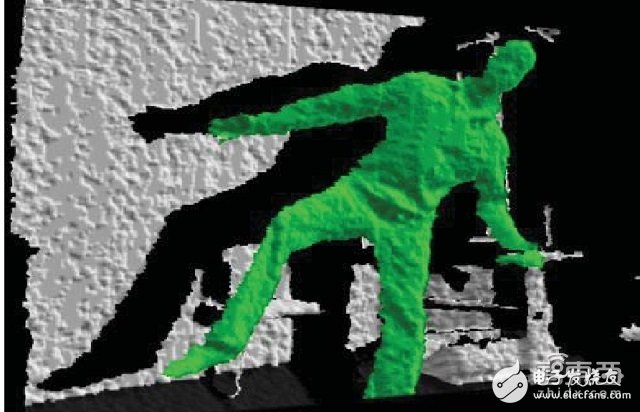If the mouse is the main device for human-computer interaction in the PC era, then the sense of body may become a more direct way of human-computer interaction in the future. By 2020, the penetration rate of somatosensory cameras in smart TVs is expected to reach 80%, the penetration rate in smartphones can reach 50%, and the market size will reach tens of billions.
The rapid development of the virtual reality VR industry further highlights the need for somatosensory interaction technology: the product-level three VR head-end HTC, Oculus and Sony PS all use the somatosensory interaction technology to achieve a full immersive real-life user experience; binocular somatosensory technology has more Opportunity to achieve gesture recognition without additional hardware.
In this issue of intelligent internal reference, we recommend the report from CITIC Securities to detail the somatosensory camera industry chain.

The following are the dry goods presented by the smart internal reference:
In fact, the somatosensory interaction technology manager has three phases:1. The early smart device interaction uses the handle mode, such as Nintendo's Wii Remote and Sony PS Move;
2. Since 2010, infrared sensory cameras have been used in Microsoft Kinect, Intel RealSense and other devices;
3. Since 2013, the more lightweight binocular camera somatosensory device has been used in PS4, LeapMoTIon and other products.
Handle feelAccurate capture of motion is achieved by signal interaction between the handle and the host. The early smart device interaction was done with the handle:
1. Realize the spatial positioning of the handle by infrared/visible light shooting;
2. With the built-in sensor (such as gyroscope, geomagnetic sensor, etc.), the hand activity can be accurately sensed.
The handle body interaction mode is simple and reliable, but the number of hardware devices is large, which is difficult to provide a real user experience, and thus is gradually replaced by infrared body feeling and binocular body feeling.
Infrared bodyThe optical camera and infrared depth sensor determine the spatial location of the human body. Infrared sensory devices generally consist of two parts:
1. Ordinary optical camera to achieve two-dimensional capture of the human body;
2. An infrared depth sensor that determines depth information by emitting or receiving infrared light.
The combination of the two can obtain the three-dimensional position of the human body.

Infrared body interaction can free hands and bring unprecedented interactive experience, so it is widely used in large-scale equipment (such as smart computers, smart TVs, etc.) (sports games, virtual instrument playing, 3D sculpture, robot control, etc.) , set off a wave of somatosensory technology. The important development trend of infrared body sensation is miniaturization, which may be applied to mobile terminals such as VR and smart phones in the future.
Binocular senseHardware devices and simplifications, or will become the long-term direction of smart phone interaction.
The binocular somatosensory device only needs two ordinary optical cameras, and the binocular stereoscopic imaging principle is used to realize three-dimensional positioning, and the comprehensive analysis and judgment of gestures and limb movements can be performed.

This method has less restriction on the input of the user, and can realize more natural human-computer interaction; since the device is extremely simple, it is more likely to be applied to a small mobile terminal such as a smart phone.
At present, a variety of mobile phones have been equipped with dual cameras, such as iPhone 7 Plus, LG OpTImus 3D, HTC EVO 3D, LG V10, Huawei glory, etc., smart phones into the naked eye 3D era.
However, the binocular sense still has a large amount of computation, and the requirements for hardware and algorithms are high. It is expected that with the improvement of chip and computing power, binocular somatosensory will become the long-term development direction of smart phone interaction.
5.00MM Wire To Board Connectors
5.00MM Wire To Board Connectors
5.0mm Wire to Board connectors are avialable in different terminations and sizes intended for use on a variety of applications. These connectors provide power and signal with different body styles, termination options, and centerlines. To find the wire to board set required, click on the appropriate sub section below.
5.0mm Wire To Board Connectors Type
5.0mm Terminal
5.0mm Housing
Pitch 5.0mm Wafer Right Angle&SMT Type
5.00MM Wire To Board Connectors
ShenZhen Antenk Electronics Co,Ltd , https://www.antenk.com